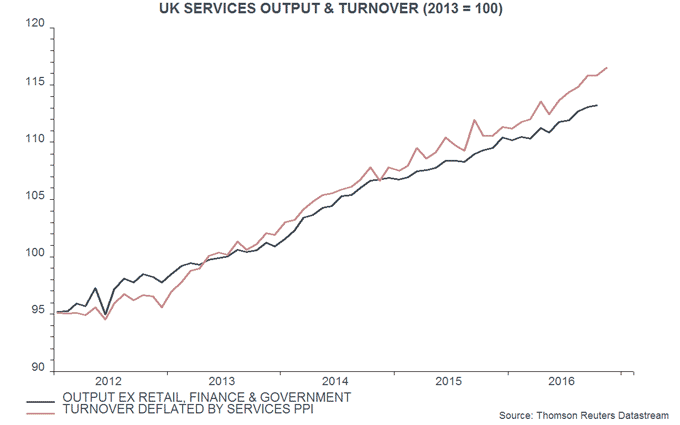UK services data suggesting solid Q4 GDP rise
The preliminary fourth-quarter GDP estimate due for release on 26 January will be an important input to the MPC’s deliberations at its meeting concluding on 1 February, with the interest rate decision and February Inflation Report to be published the following day. Available evidence suggests a quarterly increase of 0.5-0.6%, following 0.6% growth in the third quarter. This would be ahead of the Bank of England staff “nowcast” of 0.4% at the time of the December MPC meeting, when third-quarter growth was estimated at 0.5%. A solid GDP number would strengthen the case for an early reversal of the August interest rate cut.
Industrial output was today reported to have risen by 2.1% in November, more than offsetting a 1.1% October fall, with volatility partly due to North Sea maintenance operations. Assuming a further 0.2% increase in December, however, output in the sector would be unchanged between the third and fourth quarters. Construction output, meanwhile, is on course to fall again in the fourth quarter: it declined by 0.2% in November and the October / November average was 0.5% below the third-quarter level.
The forecast of stable GDP growth rests on further strength in the dominant services sector. Services output was previously reported to have risen by 0.2% in October and November turnover data released today suggest another solid gain, possibly of 0.3% – see chart*. The preliminary GDP estimate is likely to incorporate an extrapolation of recent services growth into December. If a 0.2% further rise is assumed, the suggested fourth-quarter increase in services output is 0.8%, implying a 0.6 percentage point contribution to GDP growth (based on the 79% weight of services in GDP).

Another solid GDP number, coupled with recent better-than-expected global activity data and resilient business surveys, would cast further doubt on the MPC’s forecast of an imminent economic slowdown. Inflation news, meanwhile, suggests a stronger pick-up in the annual CPI rate than the MPC expected in November: commodity prices have risen further, sterling weakness has passed rapidly into import prices (non-oil import costs surged 9.2% in the year to November), while price balances in business and consumer surveys have increased sharply – the services PMI output price index, for example, reached a 68-month high in December. The MPC switched from dovish to neutral in November and may signal a tightening bias in February.
*The chart compares a subset of the output index accounting for 58% of the total with an estimated series for real turnover adjusted for seasonals / working days and weighting differences. See previous post for more discussion.

Reader Comments